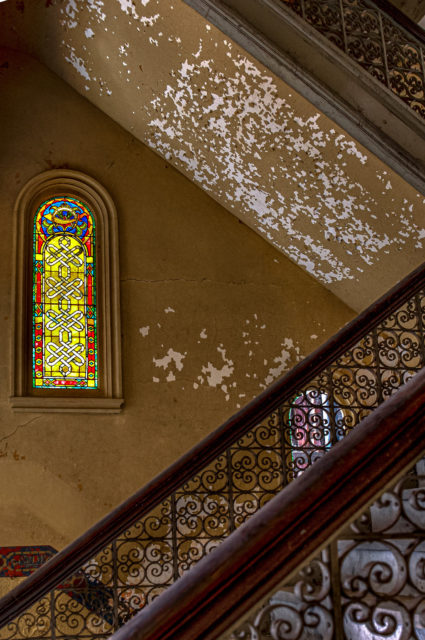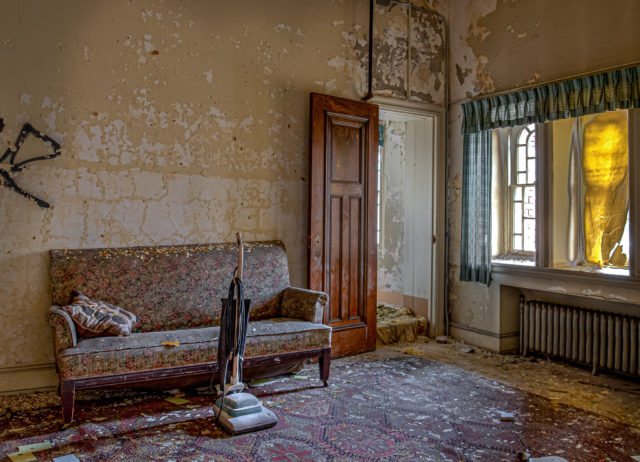In Wilkes-Barre, PA stands the Irem Temple which is a significant example in the United States of a building designed in the Moorish Revival style. The building is a national treasure and is also known as the Irem Mosque or the Irem Shrine.
Construction began in 1907 and lasted until December 1908 when the opening took place. The Temple was built with the intention that it would be used for worship and entertainment purposes offered not just to temple attendees but also to the general community.
On the entertainment side of things, the Temple hosted dance and music concerts, weddings, graduation parties, and theatrical performances as well as any other festival or holiday celebrations.
The Temple was built with four tall minarets and a large dome made of stained glass. In 1931, the main auditorium was updated by constructing balconies around the auditorium, expanding the stage area, and increasing the number of seats by installing a sloping floor. After the renovation, the Temple boasted 1,375 seats.
The Irem Temple really was a multi-cultural building. During its lifetime, as well as hosting weddings and other such events as detailed above, it was also used as a venue for more unusual events such as circus performances, a radio show, and a Star Trek convention.
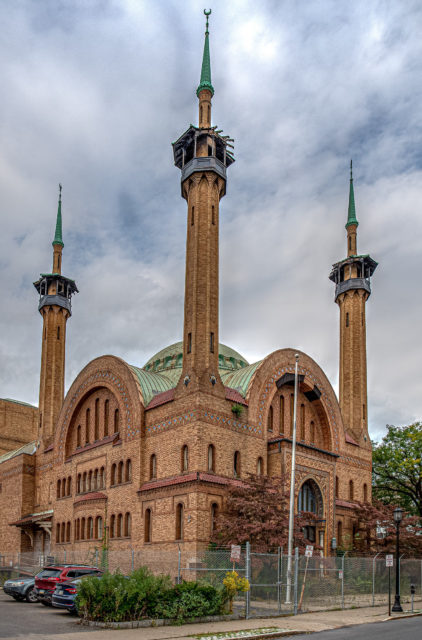
For many years, the Temple served the city as the main art scene venue scene and a performing arts theater. However, by the end of the 20th century, more and more places designed to hold similar events began to appear in the city. They were newer and had more modern equipment, making them a bigger draw than the Temple.
In the face of such competition, the Irem Temple was forced to close its doors in the 1990s, citing reasons which included the poor condition of the building and a lack of financial opportunities. The owners were just not generating enough money to enable them to fix the dilapidated state of the building.
In 2002, negotiations were initiated about turning the building into a heritage center and museum. Unfortunately, this goal was never achieved. The Temple was left abandoned until 2005 when it was acquired by the Wilkes-Barre Chamber of Commerce for $1 million.
The Chamber of Commerce bought the Temple with the goal of rebuilding it. They had a variety of uses in mind. An analysis of the structure was carried out, according to which a suitable restoration would cost $15 million.
It took until 2008 before any repair work began. The first thing to undertake was a complete overhaul of the roof. This was an essential repair needed to save the building from further water damage that could lead to the need to demolish it.
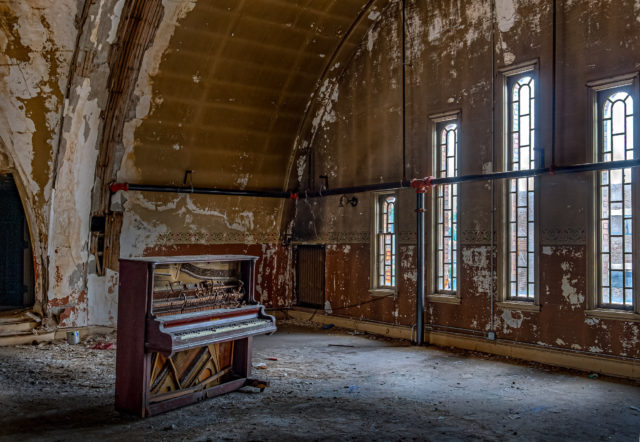
Unfortunately, 2008 also bore witness to a financial crisis. As a result of this crisis, the Chamber of Commerce was forced to halt the restoration process.
The Temple was included in the National Historical Register as a site that deserved preservation. However, after it was abandoned, it was illegally visited by many people who left various items of graffiti on its walls; carved brass railings as well as copper wiring was also stolen by scrappers.
In March 2019, the Chamber of Commerce agreed to transfer the property to a group of volunteers named the Irem Temple Restoration Group (ITRP). The ITRP is headed by Christian Wielage and they set about rebuilding the Temple in partnership with key community organizations.
The hope was that the Temple could, once again, offer a space for theater, concerts, and other social events once its Main Hall with the stage and balcony was repaired.
There are currently no plans to reinstate the seats that had previously been torn out. This is because it is hoped that a non-seated venue would prove a popular draw to music performers and would also result in more affordable ticket prices which would be appealing to students of nearby colleges. With no fixed seating, the venue could also offer a wedding venue with a large dancefloor.
It was also hoped that a heritage museum (a project which had been put forward before and then disregarded) could also be created in the remaining 18,000 square feet of space. Plans include using the basement to provide a virtual experience as well as a more traditional form of museum with artifacts and digital kiosks providing information.
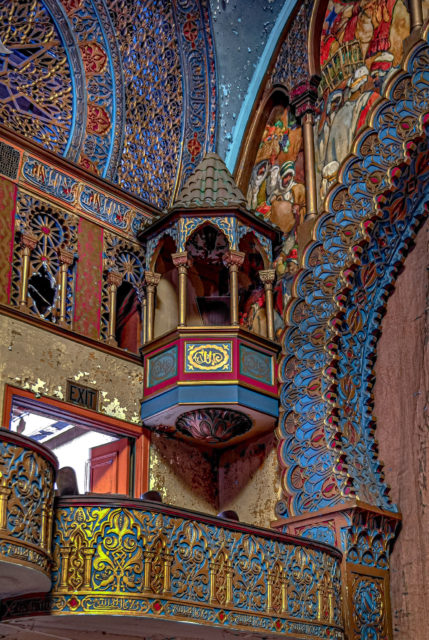
The ITRP received a grant of $400,000 from the Department of Community and Economic Development as well as further funds from the Chamber of Commerce. Repair work included the immediate blocking of roof openings to prevent any more water saturating the inside of the Temple.
Other work included wrapping the tower to prevent more water from entering and also removing the wood and copper ornamentation on the minarets in an effort to restore the ornamentation then reattach it at a later date.
The ITRP continues to fundraise for its project. A study was conducted that showed that it would take between $8-14 million to reopen this building to the public. One initiative in place to raise money is allowing photography workshops to be held inside the building with 50% of the fee going to the restoration project.
Currently, the building is covered with surveillance cameras and a fence has also been put up to deter access. Visitors are strictly prohibited from entering the building.
Thank you to Cindy Vasko for giving us permission to share her images with our readers. Go check out her Flickr account and enjoy more amazing photographs.
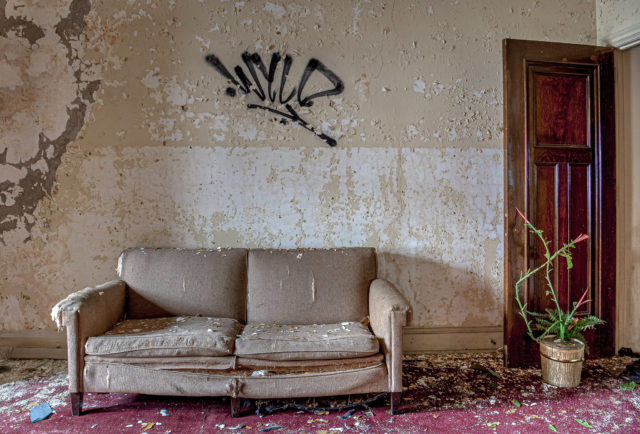
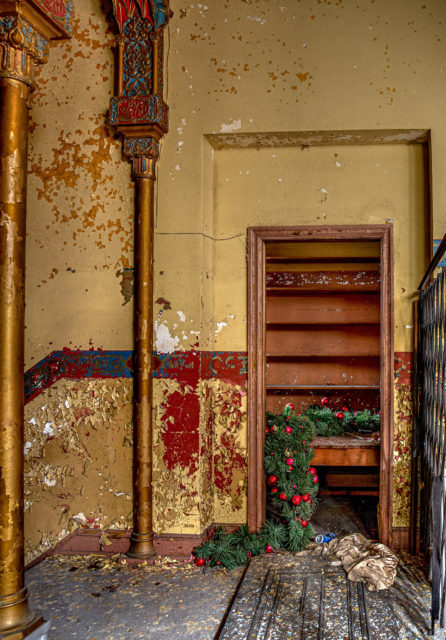
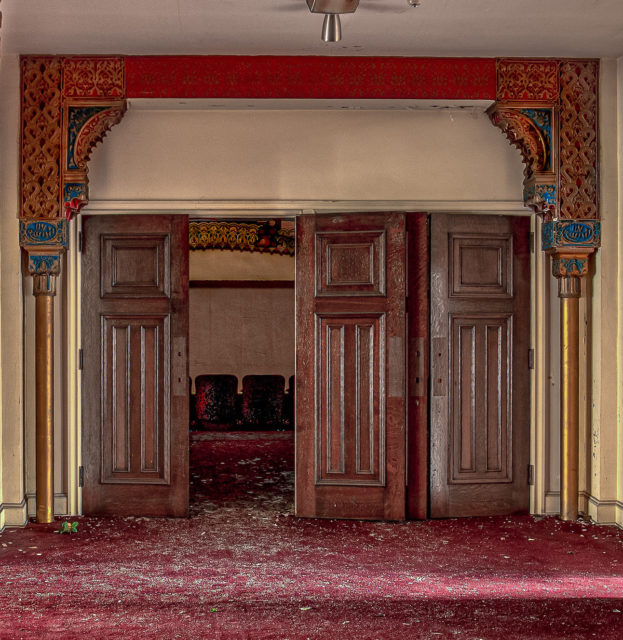
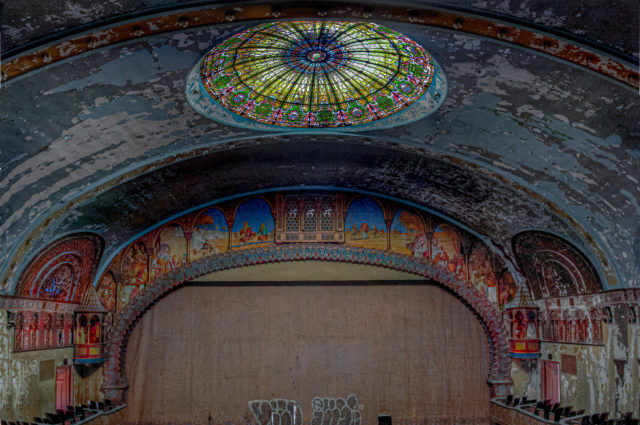
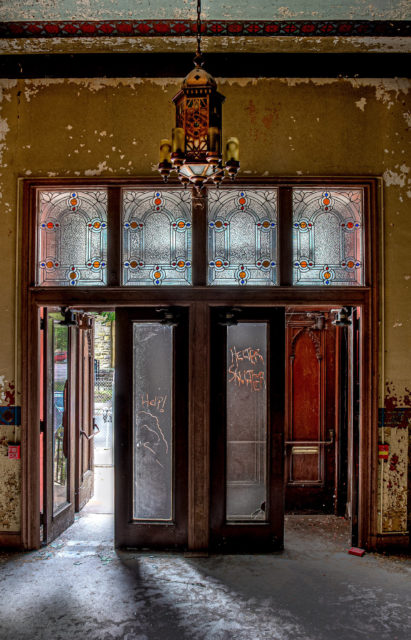
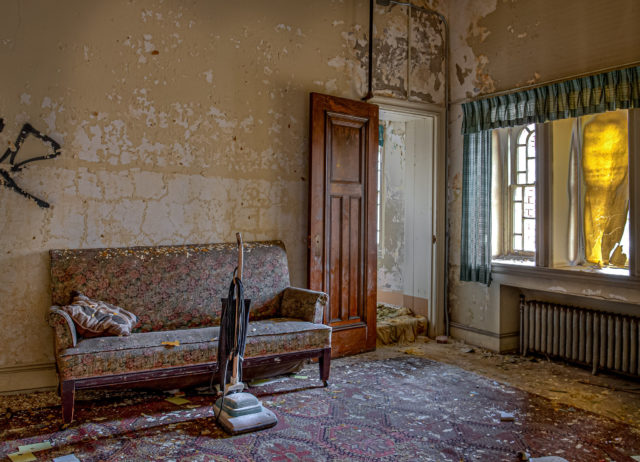
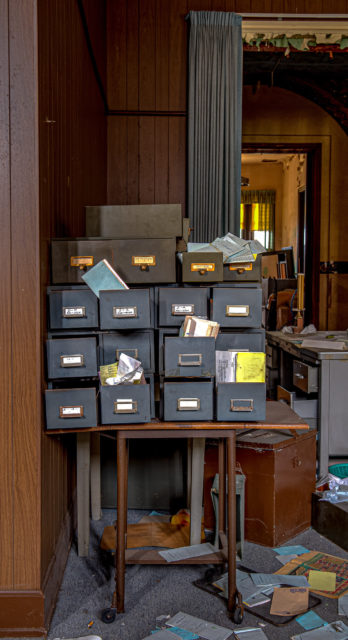
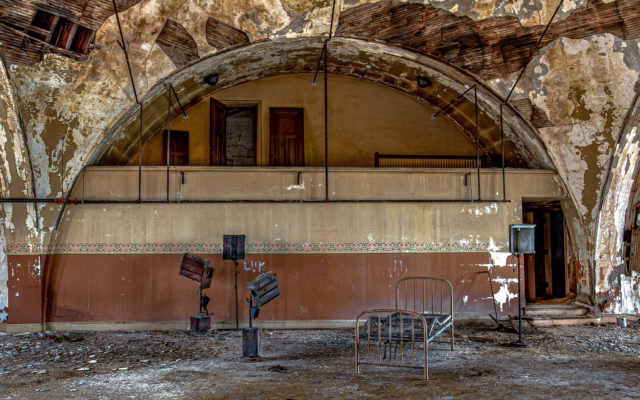
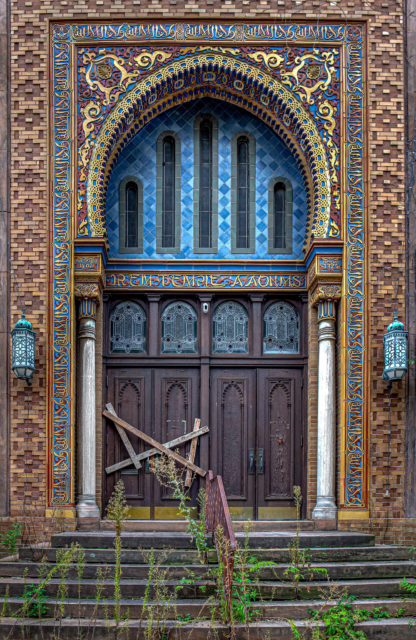
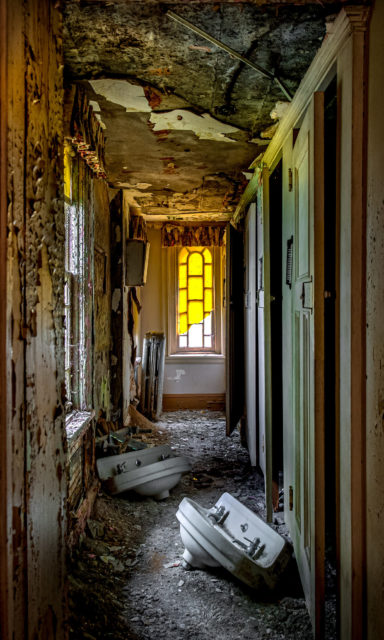
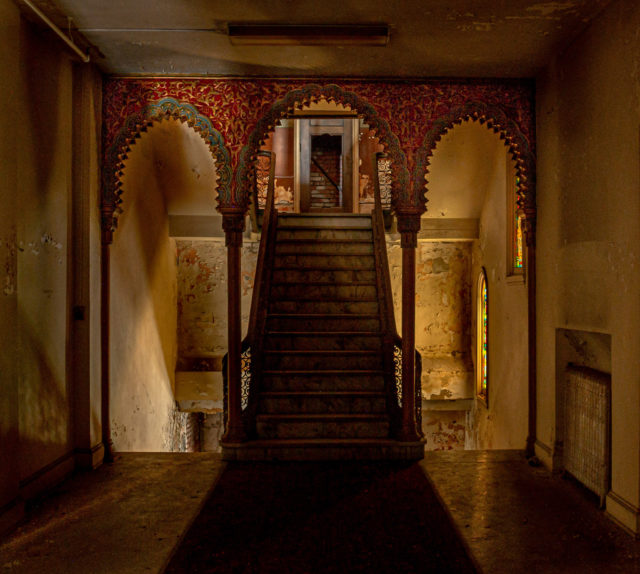
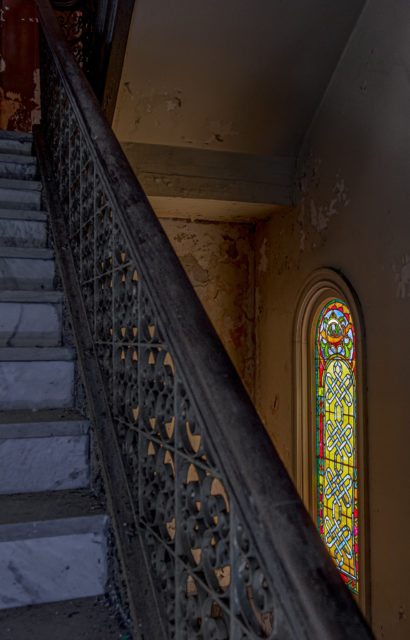
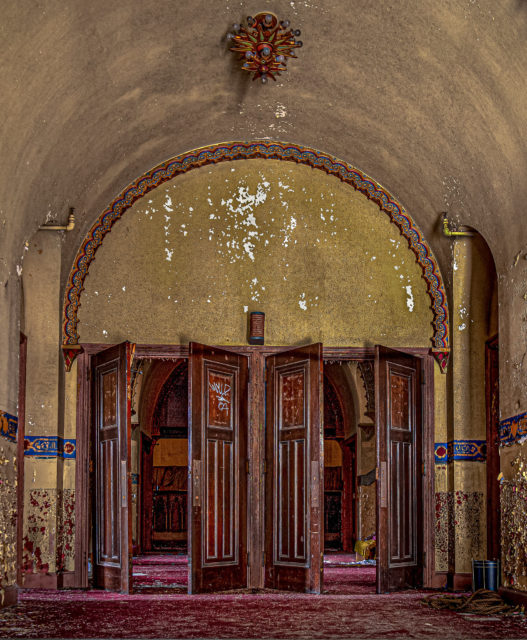
West Virginia Penitentiary now a Haunted Tourist Attraction
